Classics Dark and Dangerous: “Mrs. Amworth” – What You Need to Know
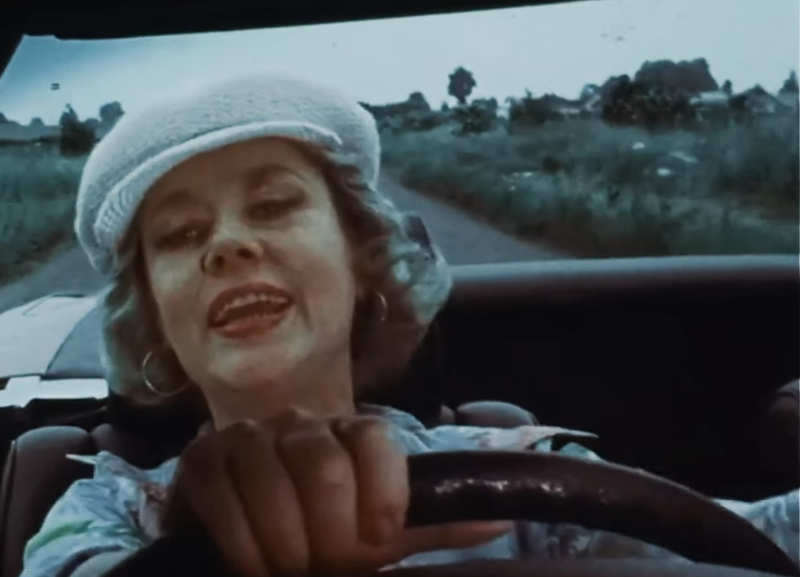
02 November 2025
During the 1970s, viewers in the UK got a chilling treat when ITV aired a 30-minute adaptation of the E. F. Benson story, “Mrs. Amworth”. Glynis Johns starred as the vibrant and attractive middle-aged vampire of the title and, with limited special effects, and not a single drop of blood shown on camera, she and the rest of the cast did an incredible job of bringing Benson’s story to life. With a runtime of just under half-an-hour, Mrs. Amworth is only a short film, but Johns is so captivating in her role, and the production as a whole is so well done, it ranks among my all-time favourite vampire films. However, there seems to be a lot of confusion about this short dramatization, and—at the time I write this—even The Internet Movie Database (IMDb) has got some things wrong. After having recently re-watched Mrs. Amworth, I suddenly feel inspired to write a little about it and try to fill in some of the grey areas.
Shedding Some Light on the Origin of the Film
The most common mistakes relate to the film’s origin. Many sources, including IMDb, claim Mrs. Amworth was filmed as pilot episode for the “unmade TV series” Classics Dark and Dangerous. However, the series was completed, and it did air in the UK, later being aired in Canada as well. There were six episodes in the series, all of which were based on stories by famous authors such as Isaac Asimov, Robert Bloch, and Sir Arthur Conan Doyle. All six episodes are often available on YouTube, and three of them—”Mrs. Amworth”, “The Mannikin”, and “The Island” were combined in to make the 1977 British-Canadian horror anthology film Three Dangerous Ladies. I can’t find anything to suggest the film ever made it to DVD, but it was certainly available for a while on VHS videotape. Arguably the best of the six episodes; during the 1980s, Mrs. Amworth was also available on VHS as a short stand-alone film.
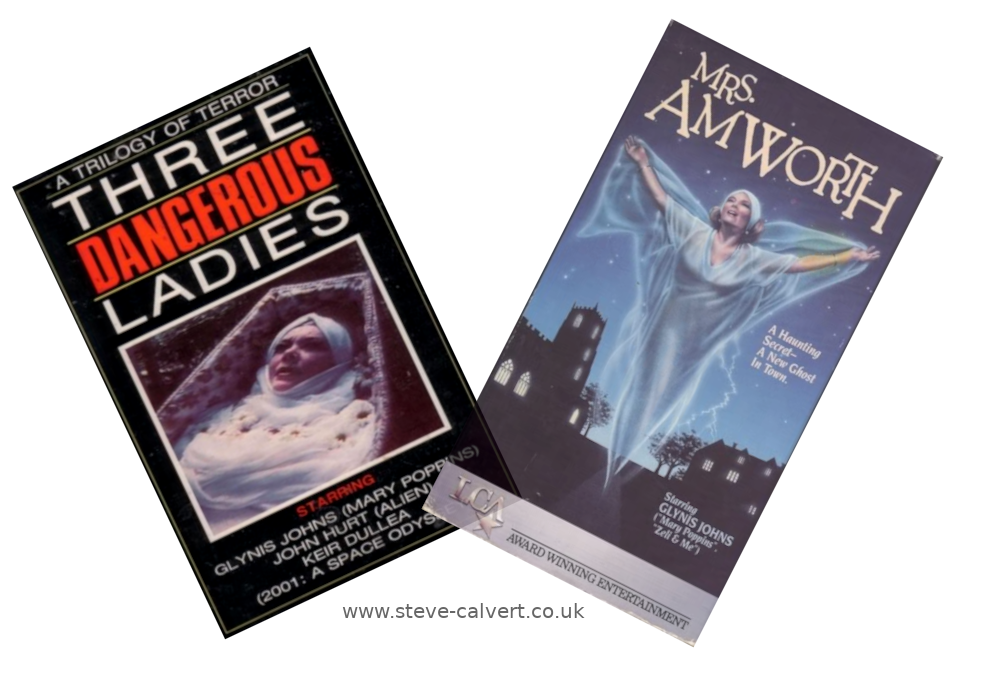
The Classics Dark and Dangerous TV series was by produced Highgate Associates Limited in association with HTV West and the Ontario Educational Communications Authority (OECA). Sources differ on when the episodes were first aired, but the date was likely prior to the release of Three Dangerous Ladies in 1977. A listing at The Television & Radio Database (TVRDb) suggests Mrs. Amworth aired on Thursday 15 June 1978, at 21:30, but it is likely this was a repeat because an examination of the small print on the back of the VHS video case for the short film, reveals it has 1975 copyright date.

A Look at the Plot
As in Benson’s original story, Mrs. Amworth is a vampire who is active during the day and seems to thrive in the sunlight—something that was rare in vampire films of the time. The film begins with the charming, if somewhat eccentric, Amworth singing “Greensleeves” as she cruises down a small country road in her open-topped, red Mercedes; proving a menace to the drivers of the other vehicles that have to share the road with her. In just a few minutes, her recklessness nearly cause a couple of collisions, and the horn blasts she gets as a reward do not phase her at all.
The script as a whole is mostly true to Benson’s story, which is set in a small English village, where the local community is mostly made up of bachelors, spinsters, and elderly people. However, Benson’s story was set in the 1920s, when automobiles required a crank handle to start them, and were fitted with trumpet-like horns the driver had to honk by squeezing the rubber bulk on the end. The Classics Dark and Dangerous adaptation of “Mrs. Amworth” is set in the 1970s, when Ford Cortinas were a common sight on British roads, and police cars and ambulances still had a single, bulbous blue light on their roofs instead of the long flashing lightbars that are so common today.
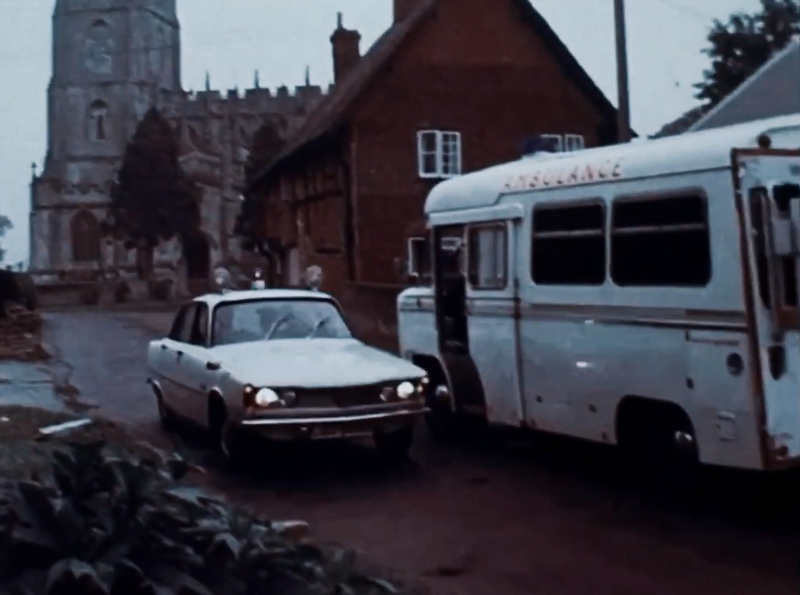
At the start of the film, Mrs. Amworth is the newest and most popular resident in the village, and is about to throw a garden party for her neighbours. Rushing home with some extra supplies, she spots her friend Benson (Derek Francis) and his nephew, David (Pip Miller), who has just got off the bus. Eyeing the young man, Amworth throws her Mercedes into reverse and offers the pair a lift to Benson’s cottage.
During the journey, an ambulance flashes past, and Mrs. Amworth asks David if his uncle has told him about the epidemic. Confined only to the village, the malady involves a form of anaemia. Benson thinks the virus may be spread by the gnats which have become prevalent in the village, the local GP, Dr. Ross (Rex Holdsworth), does not rule this out either, but Benson’s friend and neighbour Mr. Urcombe (John Phillips)—a retired college professor and expert on the occult—has other ideas. He suspects the sickness in the village may be due to vampiric attacks. Benson is initially loath to adopt this theory, but after David is taken ill, he is forced to give Urcombe’s idea greater credence.
How the Short Film Compares to the Original Story
Although the film remains largely true to Benson’s story, which is told in the first-person from the perspective of an unnamed narrator, there are some additions and updates. Moving the story from the 1920s to the 1970s, is just one of them. David is another, there is no such character in the original story. Nor is there a character called Benson, the producers of the film appear to have given the name to the narrator as a form of homage to the story’s creator.
In order to reflect more “modern” times, a state of emergency has been called in the village, where the village hall has been converted to an emergency medical centre, and a team of doctors are busy taking blood sample from all the villagers in an attempt to try and figure out what is going on. Their investigation has been futile. They suspect a form of pernicious anaemia, but the vitamin B12 injections that should help reduce the symptoms are not working.
Mrs. Amworth’s physical appearance, is also changed for the Classics Dark and Dangerous dramatization. In Benson’s original story, she’s described as a dark-haired, tall and robust woman. Glynis Johns is not a match for this description, but in all honesty, I must admit I find the film more enjoyable than the original text, largely due to Johns’ ability to portray Mrs. Amworth as such a charming monster.
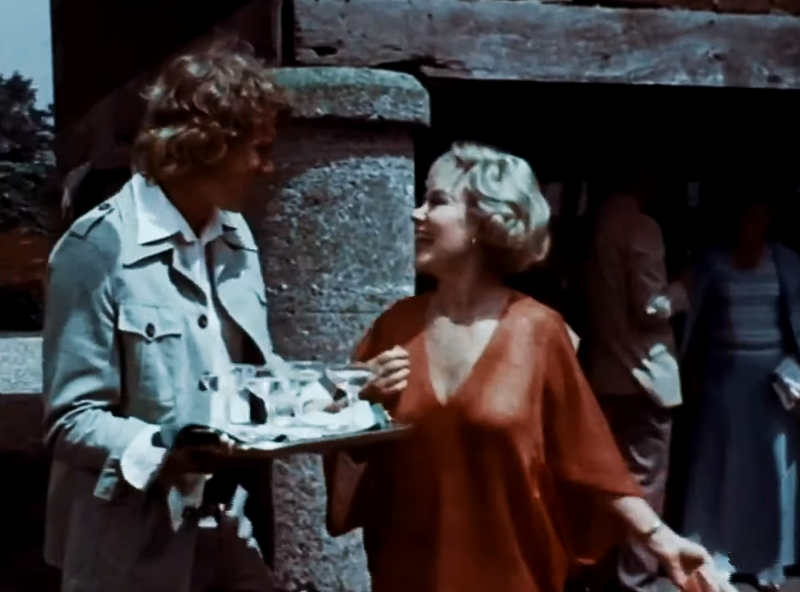
Mrs. Amworth and Standard Vampire Tropes
In both the original story and the Classics Dark and Dangerous adaptation, Mrs. Amworth defies tradition by exposing herself to the sun without any worries of succumbing to a deadly sun tan. However, like most vampires in stories and films, she doesn’t appear capable of eating normal food, and politely refuses to eat anything when David presses her to do so during her party. Later, when David cuts his finger, and she examines the wound, there is no sign of hunger or loss of control. She does not appear affected by it at all. There is no blood shown on camera during this scene, or any other scene. This is another way Mrs. Amworth differs from many other vampire films.
As for an ability to take on animal form, that’s one thing that doesn’t appear to he in the village vampire’s bag of tricks. However, she is able to become vapour-like and disappear at will. Unfortunately she fails to take advantage of this ability quickly enough when she reaches her hand through Urcombe’s window, while attempting an uninvited lunch date. The next morning, when she attempts to visit David in his sickbed, she has bandages on her fingers.
Breaking the norm, the need for wooden stakes is dispensed with. When the vampire is finally laid to rest, Mr. Urcombe makes sure she gets the point by lifting a pickaxe and swinging it down through her chest. Strangely this doesn’t result in any splatter or raining blood, just a little discolourment of the fabric around the entry point over the heart.
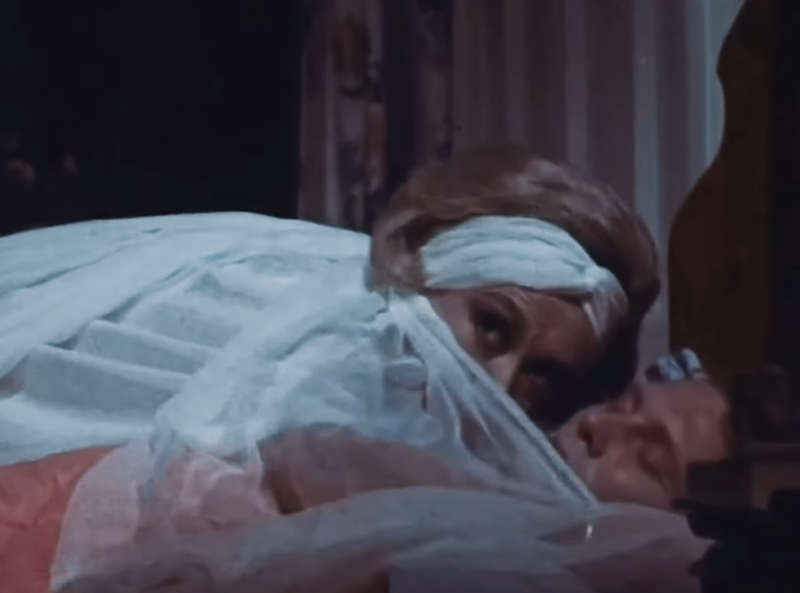
Where to Watch Mrs. Amworth
Viewing options for Mrs. Amworth are limited. The same is true for the other five episodes of Classics Dark and Dangerous. If you are lucky, you may find an old VHS copy on eBay, but viewing it will require access to a VHS video player. A better option may be to search for a YouTube video. If you can find one, try to go for a copy taken from 16mm film, rather than one copied from an old videotape. The picture quality tends to be better.
At the time of writing, YouTube has several uploads, the best of which, you can view in the player below.
If the player above stops functioning, and you are unable to find Mrs. Amworth on YouTube, it may be worth trying competing platforms, such as Daily Motion, but you are unlikely to find it on Tubi or similar film streaming sites.
~~~
